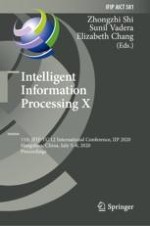2020 | Book
Intelligent Information Processing X
11th IFIP TC 12 International Conference, IIP 2020, Hangzhou, China, July 3–6, 2020, Proceedings
Editors: Zhongzhi Shi, Sunil Vadera, Elizabeth Chang
Publisher: Springer International Publishing
Book Series : IFIP Advances in Information and Communication Technology
